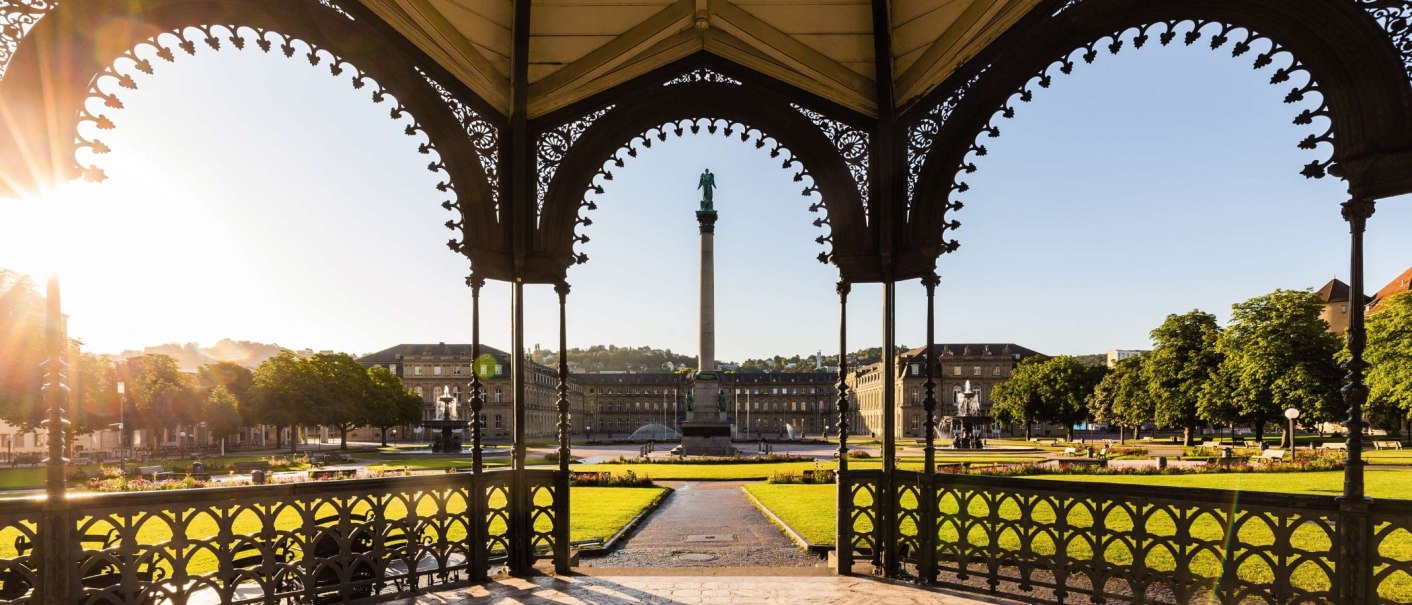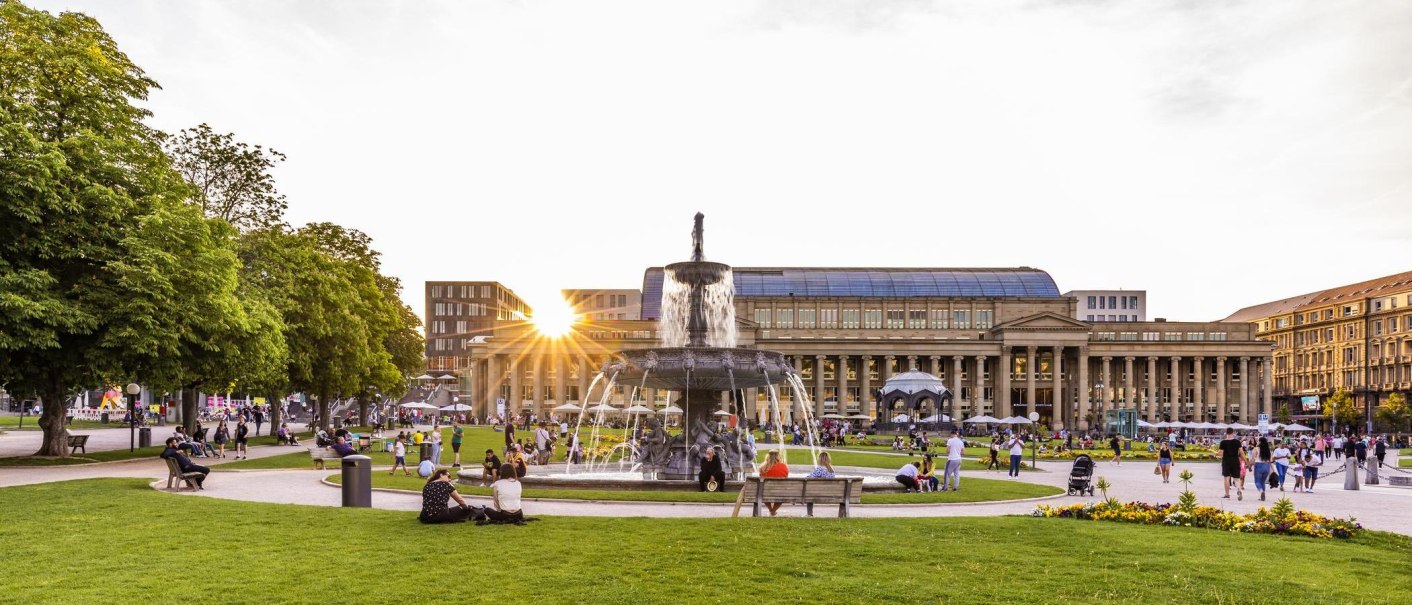Schlossplatz Stuttgart (Palace Square)
Stuttgart's Palace Square is the vibrant heart of the city, but at the same time it's a place to linger, within easy walking distance of many of the city's attractions. Palace Square is therefore Stuttgart's hub and an integral part of any stroll through town. In 2006 pictures of Palace Square went round the world, when 60 000 fans turned it into a sea of black, red and gold flags at the public screenings during the football World Cup. Stuttgart's Palace Square is a place both to celebrate and relax. Open-air concerts are held here at regular intervals against the backdrop of the New Palace and at the beginning of August Stuttgart's Summer Festival transforms Palace Square and the Upper Palace Gardens into a gaily lit, elegant promenade.
Originally part of the ducal pleasure garden, the square served as a military drill and parade ground from 1746 onwards. It was not until the middle of the 19th century that it became a Baroque park that could also be used by the townspeople. In the middle of Palace Square towers the Jubilee Column (1841), surmounted by Condordia, goddess of harmony. Behind her is the New Palace, whose architecture, thanks to its lengthy construction period from 1746 to 1807, is a mixture of Baroque, Classicism, Rococo and Empire. Up until the second half of the 19th century, this was the royal residence of the kings of Württemberg. Today, the palace contains ministries of the Baden-Württemberg state government and state reception rooms.
The Old Palace was originally the seat of the first counts and dukes of Württemberg. It is now home to the Württemberg State Museum. Each year its inner courtyard is the setting for the official opening of the Stuttgart Wine Village and the Christmas Market. The Museum of Art, a 27-m-high glass cube, is no less of an eye-catcher at night, when it sets the concrete core of its interior aglow, radiating light into Palace Square. The museum's collection comprises over 15 000 works of art from the late 18th century up to the present day.
Diagonally opposite is the Kunstgebäude gallery, its cupola surmounted by a golden stag, where regular exhibitions of contemporary art are staged by the Württemberg Art Association. The original building was destroyed in WW II and rebuilt to plans by the architect Paul Bonatz, who also designed the main railway station. Between the Kunstgebäude and the New Palace are the Upper Palace Gardens. Here, a sombre structure with a steel skeleton frame catches the eye: the Landtag, seat of Baden- Württemberg's parliament. Built in the 1950s, it was purposely designed in a style that would not detract from the classical architecture of the Opera House and State Theatre.
If you prefer shopping to culture, you'll be in your element in Königstraße, Germany's longest shopping precinct, which takes you past Palace Square and also the Königsbau, Stuttgart's oldest shopping arcade.



